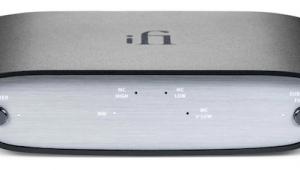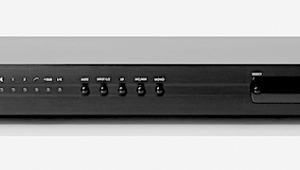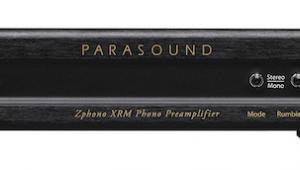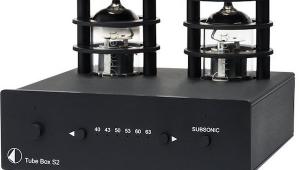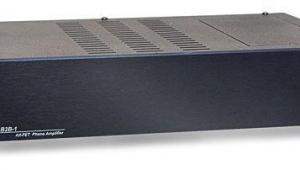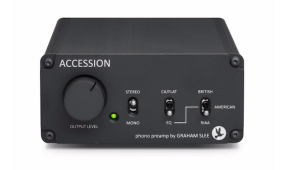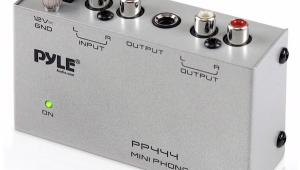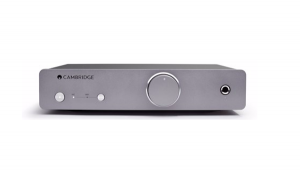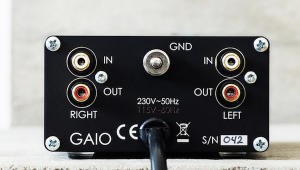Abbingdon Music Research PH-77 Phono Equaliser Page 2
How do I know? I contacted veteran Columbia mastering engineer Mark Wilder, who thought I was correct, but to be sure, he contacted some of the really veteran Columbia mastering engineers—those who'd been around in 1955. They confirmed, some with more certainty than others, that Columbia had made the switch to RIAA on all their lathes by 1955.
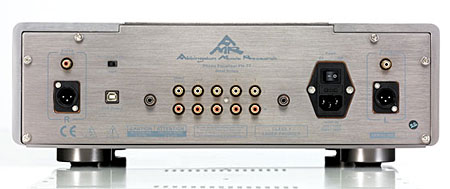
Be my guest and use the PH-77's choices of curve as an equalizer to make your favorite records sound as you wish, but unless you have a large collection of pre-1955 monophonic LPs and/or 78s, most of the time you'll use—or should use—the RIAA setting (or the RIAA with the Neumann constant, which John Atkinson doesn't like (footnote 1); or the RIAA DMM setting, which I'd never heard of).
Four Inputs, Some Waiting: The AMR PH-77 has a single Direct input and three switchable ones. You can use either configuration, but going from Direct to switchable requires shutting the unit completely off—and you're advised to not plug simultaneously into both. While the three switchable inputs will offer great convenience for some, there was a sonic price to be paid in terms of transparency, three-dimensionality, and harmonic integrity compared to Direct. Therefore, I did all of my listening through the Direct input. You can have convenience or optimized sound quality, but you can't have both at the same time.
Whatever your desires in loading, gain, and phono EQ, they're but a button-press or two away, once you've mastered the hierarchy. You can also custom-load your cartridge with plug-in resistors, if the built-in values don't suit it. Output is either via single-ended RCA or "convenience" XLR (ie, the single-ended output is available on an XLR but there is not an actual balanced output).
Sweet Sound! I can't vouch for that –147dB noise spec—John Atkinson will be writing a Measurements" follow-up" in a future issue—but I can say that the PH-77 was remarkably quiet, even through its higher gain settings. In fact, it was subjectively just about as quiet as the solid-state phono preamps reviewed here. Quiet musical passages unfolded against dead-black silence. With nothing on the turntable and my ear pressed to a tweeter, I heard only a faint, smooth hiss at my normal volume level.
The PH-77 produced the easy musical flow and harmonic richness and delicacy that only tube amplification seems to offer, ramped up a few notches with the addition of tube rectification. Those who relish tubes' sense of unimpeded musical flow will revel in the PH-77's liquidity and continuousness. While rich and full, instrumental textures were not too ripe or romanticized. Attacks were reasonably fast and properly sharp, yet supple. Cymbals sizzled nicely, and kick drums had both solid body and convincing physical definition. Acoustic and electric bass lines unfurled with their rhythmic and harmonic structures intact, though the PH-77's character in the bottom end was more suited to the acoustic instrument. Unlike some tubed phono preamps, the PH-77 completely avoided the combination of rhythmic sluggishness and loss of bottom-end definition with exaggerated image size and lack of control.
The AMR's overall tonality was subjectively linear, and free of the warm lumps on bottom or curtailed highs some listeners associate with tubes. Instrumental harmonic structures were vividly painted with a full palette of colors. Well-recorded massed strings had a realistic golden sheen, with more than enough detail and bite to satisfy, while brass sparkled with metallic intensity instead of descending into velvety romanticism.
Were you to have heard through the PH-77 my ffss pressing of Falla's Nights in the Gardens of Spain backed with Rodrigo's Concierto de Aranjuez, with Ataulfo Argenta conducting the National Orchestra of Spain (LP, London CS 6046), you'd surely have blurted "I'll take it!" That's how richly and delicately drawn, in three dimensions, were the elements of the orchestra, free of electronic artifacts, on a wide, deep soundstage against a black backdrop pierced by Narciso Yepes's precisely rendered classical guitar. And I could go from those recordings, of great delicacy and beauty, to the new Experience Hendrix/Sony Legacy AAA Jimi Hendrix reissues and not feel seriously shortchanged by the PH-77's rendering of rock music.
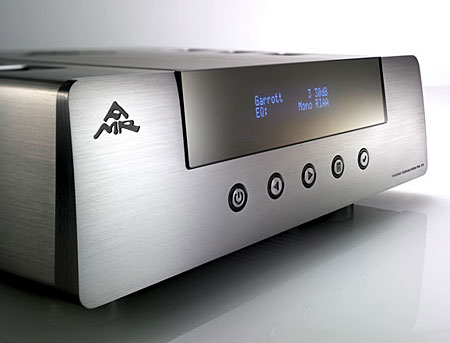
Still, if your musical diet consists mostly of rock, and amplified music in general, I think you'd be better off elsewhere. But for jazz and classical? Play some tracks from some choice new reissues—say, The Nat King Cole Story (45rpm LPs, Capitol/Analogue Productions APP-SWCL 1613), or Johnny Hartmann's I Just Dropped By to Say Hello (LP, Impulse!/ORG 027)—and you won't need any convincing.
Summing Up
The PH-77 is a sweet, tonally well-balanced, quiet performer that produced a large, authoritative sonic picture packed with honest detail. Its weakest suit was its inability to produce full macrodynamic expression. While it was good in that regard, it was noticeably less fully expressed than through the other phono preamps surveyed here, though I noticed the difference only in direct comparisons, and because my Wilson MAXX 3 speakers exude dynamic explosiveness.
The PH-77's A/D converter is a nice convenience if you are wanting to rip your LPs, and while 24/96 doesn't make much sense if you're burning 16/44.1 CD-Rs, it makes complete sense if you're storing full-resolution files on a music server like the Sooloos—as I found out.
I hope AMR can introduce a less expensive version of the PH-77 with only a single, direct input—I think most serious listeners won't be using the switchable inputs of this superlative-sounding phono preamp.
Footnote 1: See "Cut and Thrust," Keith Howard's treatise on RIAA equalization in the March 2009 issue.—Ed.
- Log in or register to post comments





